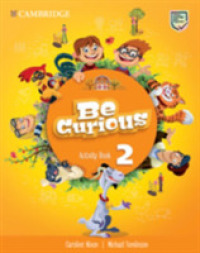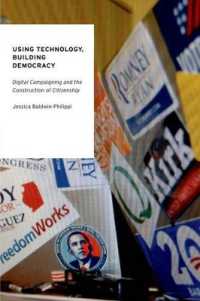Full Description
This essential resource helps educators tackle the most common and challenging dilemmas that arise in today amp rsquo s classroom-such as diversity, privilege, and intersectionality.
This book examines common challenges that arise for educators teaching social justice and diversity-related courses and offers best practices for addressing them. Contributors cover issues such as the many roles instructors play, inside and outside of college and university classrooms, for example, in handling personal threats, responsibly incorporating current events related to social justice into classroom discussion, navigating one's own stigmatized or privileged identities, dealing with bias in teaching evaluations, and engaging in self-care.
The authors' backgrounds offer unique perspectives from which to approach such complex subject matter several contributors are feminist or intersectional scholars with the experience and expertise to address the pedagogical dilemmas that often arise in teaching social justice. Many of the issues discussed arise from the authors' own experiences as teachers in the current social climate however, they also are verified by research on quality teaching in general and teaching about diversity specifically.
Contents
Preface
Faye Crosby
: Pedagogical Humility and Peer Mentoring for Social Justice Education
Kim A. Case, Mary E. Kite, and Wendy R. Williams
2: Ground Rules for Discussing Diversity: Complex Considerations
Susan B. Goldstein
3: Social Justice Burnout: Engaging in Self-Care While Doing Diversity Work
Asia Eaton and Leah R. Warner
4: Mistakes Were Made by Me: Recovering When an Instructor amp rsquo s Error Affects Classroom Dynamics
Mary E. Kite, Samuel M. Colbert, and Scott M. Barrera
5: When the Professor Experiences Stereotype Threat in the Classroom
Desdamona Rios, Kim A. Case, Salena M. Brody and David P. Rivera
: Becoming a Target: Anonymous Threats While Teaching Diversity Courses or Working on Social Justice Issues
Lisa S. Wagner and J. J. Garrett-Walker
7: Inclusion amp ndash Exclusion: Balancing Viewpoint Diversity and Harmful Speech in the Multicultural Classroom
Salena M. Brody and Darren R. Bernal
8: The Efficacy Paradox: Teaching About Structural Inequality While Keeping Students amp rsquo Hope Alive
Lisa M. Brown
9: Emotionally Charged News in the Classroom
Ryan M. Pickering
: Raising the Consciousness of Students Holding Ingroup Stereotypes
Lisa M. Brown and Wendy R. Williams
: White Privilege in the Classroom
Leah R. Warner, Lisa S. Wagner, and Patrick R. Grzanka
2: Navigating Difficult Moments Outside the Classroom
Wendy R. Williams and F. Tyler Sergent
3: Contemporary Issues in Terminology: Using Gender-Inclusive Language to Create Affirming Spaces
Amanda J. Wyrick
4: Aging as an Element of Diversity: Best Practices for Challenging Classroom Conversations and Avoiding Ageism
Lisa S. Wagner, Tana M. Luger and Matthew Calamia
5: Outsiders Teaching Insiders: How Instructors From Privileged Groups Can Effectively Teach About Diversity
Susan B. Goldstein
: When Students Frame Prejudicial Speech as amp ldquo Freedom of Speech amp rdquo : Classroom and Institutional Implications
Leah R. Warner
7: Student Evaluations of Teaching: Can Teaching Social Justice Negatively Affect One amp rsquo s Career?
Guy A. Boysen
8: Flotsam and Jetsam: Staying the Course While Navigating Difficult Moments in Teaching Diversity and Social Justice
Wendy R. Williams, Mary E. Kite, and Kim A. Case








